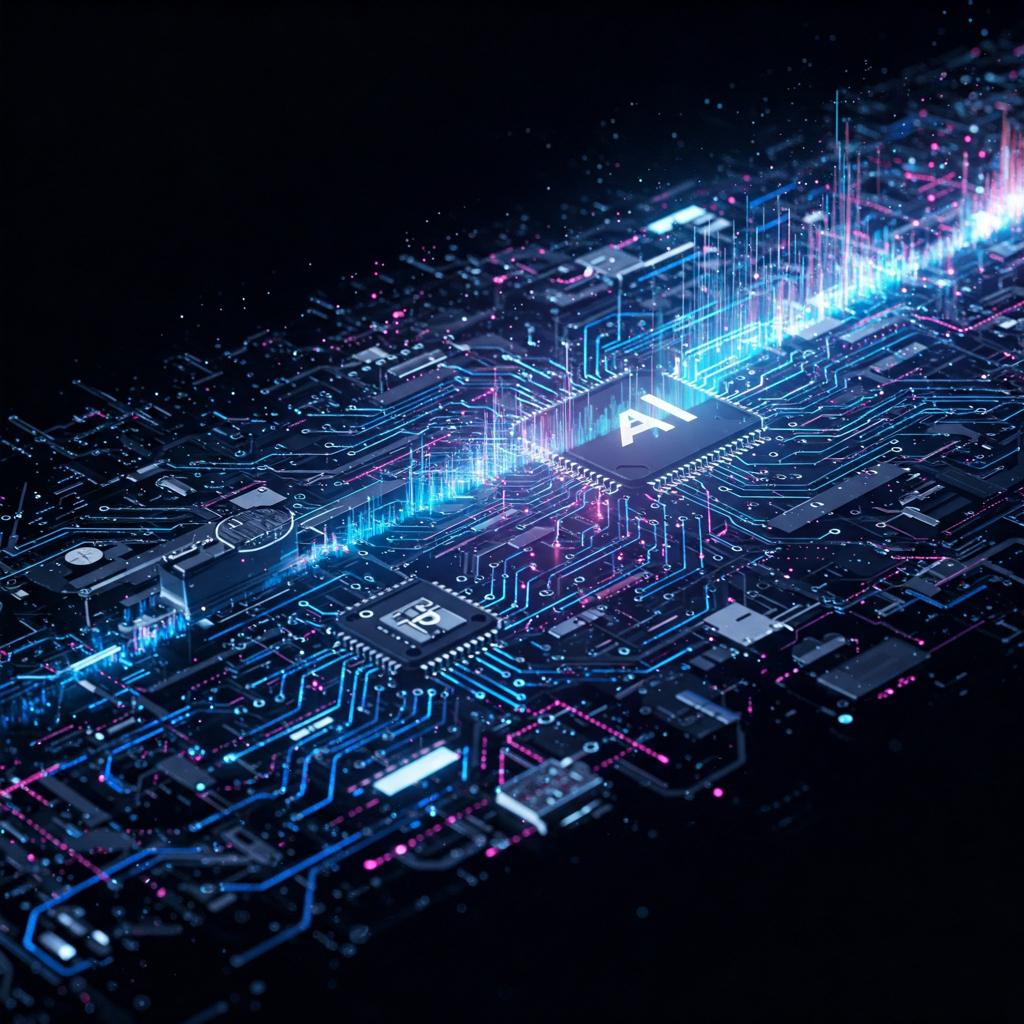
Reactive AI: How It Shapes Modern Technology
Reactive AI is a form of artificial intelligence system applied to respond to specific stimuli or inputs in real-time without keeping memories of the past. Reactive AI does not have any memory or learning from past interactions unlike more evolved AI systems. It is an expert at solving current issues through pre-specified rules or patterns. These computer programs are very good at performing certain things but lack any ability to generalize or expand beyond their specified uses.
Characteristics of Reactive AI
Reactive AI is distinguished by its simplicity and task-oriented structure. Some of the distinctive properties of Reactive AI that distinguish it from more advanced artificial intelligence are described below:
No Memory or Learning
One of the most distinguishing traits of Reactive AI is its lack of memory. In contrast to other forms of AI, which learn and improve through adaptation and experience with the passage of time, Reactive AI systems operate based on the input received at a specific moment. They do not recall previous interactions nor learn from experience. This feature lowers the responsiveness of Reactive AI compared to systems that utilize data storage for enhanced performance.
Task-Specific
Reactive AI systems are tuned to a particular task. They are good at dealing with pre-defined functions and problem-solving that falls in an extremely narrow context. They are unable to generalize knowledge from one task to another or extend to new, unexpected situations. This aspect makes Reactive AI perfect for contexts in which tasks are repetitive and predictable.
Real-Time Response
Reactive AI systems are designed for real-time operation. Reactive AI systems compute inputs and produce outputs almost in real-time. Reactive AI is typically very slow in terms of response time so that it doesn't get delayed in reacting to changing inputs or the environment.
Rule-Based Actions
The behavior of Reactive AI is based on a pre-specified rule or algorithm. Rules dictate the way the system responds to different stimuli. As Reactive AI doesn't entail learning from experience, the actions it performs are strictly determined by the specific rules that it has been programmed to work under.
Examples of Reactive AI
Although far less sophisticated than the work of all but a handful of other artificial intelligences, Reactive AI has an astonishing number of applications in the real world. Some of these in present usage are as follows:
Chess-Playing AI
The initial chess-computers, e.g., IBM's Deep Blue, are classical Reactive AI. They execute pre-written programs while examining the state of a chessboard and making a move in accordance with pre-programmed instructions. For example, Deep Blue never changed or learned from past games but merely performed a sequence of logical operations to determine the game and produce the most optimal possible moves at any moment.
Industrial Robots with Autonomy
Reactive AI is used in business in the form of robots carrying out repetitive tasks, i.e., assembly, welding, and packaging. The robots utilize feedback directly from sensors to react according to the environment and according to fixed rules. For instance, a production line robot in a factory can be repeating the same series of activities time and again without learning and getting better in behavior over a period of time. These robots work best in contexts where the work is static and well-defined.
Customer Service Chatbots
Reactive AI customer chatbots for responding to simple questions and customer support operations are most commonly employed uses of Reactive AI. The chatbots will reply to customers through keyword matching or canned responses. The chatbots learn nothing from past interactions because each query is an isolated incident. Thus, the chatbot will be unable to create conversational flows or adjust responses according to past experience with the same user.
Autonomous Vehicles (Simple Models)
There are simple autonomous cars, particularly cars that cruise around in well-organized environments like factories or warehouses, with Reactive AI. The cars possess sensors such that they can cruise along through simple routes and adapt to barriers en route. The simple models do not adapt and learn from experience, i.e., they can only cruise in well-organized and systematic environments with limited adaptation.
Image Recognition Systems
There are some image recognition systems within the realm of Reactive AI, such as security cameras. They detect some visual indicators, such as movement, and trigger a response, such as an alarm, and do not store information on the perceived event. A camera, for example, can be programmed to detect movement in an area that is off-limits and sound an alarm automatically, but it will not remember what occurred when being processed.
Benefits of Reactive AI
While Reactive AI has restricted use, it still has a variety of advantages in some situations. Some of the most significant advantages of Reactive AI are discussed below.
Simplicity
One of the most compelling arguments for Reactive AI is that it is easy. The Reactive AI systems are simple to design, implement, and deploy. With no learning or complex algorithm happening in Reactive AI, it is an affordable solution for operations where decision-making is rudimentary.
Efficiency
Reactive systems of AI are designed to react fast, and consequently, they are best suited for real-time systems. Because they don't require long-term memory and processing, they consume the least amount of computational resources and hence are best suited for applications where efficiency is most important.
Consistency
Due to the strict control of Reactive AI, these systems are very predictable in terms of what they do. They will always respond to a given input in a rigid way, so they are ideal for applications where predictability and consistency are a priority.
Reliability
The second benefit of Reactive AI is that it is trustworthy. Since such systems are not learning from the past, they will never be plagued with bugs like overfitting, biased data, or by bugs due to misinterpretation of the past. This also increases the efficiency of Reactive AI in high-stress environments where accuracy and reproducibility matter the most.
Limitations of Reactive AI
As good as Reactive AI is, though, it does have some limitations that limit its application to more complex systems:
No Adaptability
One of the greatest drawbacks to Reactive AI is that there is no adaptability to new situations. Because the systems do not learn from experience or change with varying situations, they can be applied only in situations where work is stable and predictable.
Lack of Memory
Reactive AI systems lack memory and thus cannot take decisions based on information or knowledge gained earlier. This renders them incapable of solving complex problems in which they need to comprehend earlier events or interactions.
Task-Specific
Reactive AI is programmed to do something. That although it makes Reactive AI a prodigy in certain applications, also renders Reactive AI incapable of being redirectable towards new or alternative uses with such simplicity. For instance, a question-and-answer chatbot program to discuss something cannot merely flip and discuss something completely different without being repurposed from scratch.
No Creativity
Reactive AI devices cannot think outside the box. Whatever they come back with is predetermined based on the rules and algorithms that they've been programmed with and thus are not capable of innovating or thinking of something new. Reactive AI is thus not particularly suited to performing tasks where thinking outside the box is involved or being capable of dealing with new situations.
The Future Role of Reactive AI
It may be lacking in some aspects, but Reactive AI is set to be a dominant force when it comes to the future of most businesses. Even as newer, advanced AI technologies emerge, Reactive AI will have its niche in some applications dealing with real-time responses and predictability.
Particularly, Reactive AI will remain critical in fields such as manufacturing, where it is usually required to carry out repetitive tasks, and customer support, where quickest is best. Finally, the simplicity and consistency of Reactive AI also make it a great tool for specialized systems and not the ability to learn or change.
Even though Reactive AI won't evolve into higher forms of AI, it is possible that one can integrate it with more sophisticated systems with machine learning and memory. Within these hybrid systems, Reactive AI will act as a building block, offering immediate responses in real time while more complicated algorithms will be employed for learning and adaptation.
With the advancement in artificial intelligence, Reactive AI is now able to be intermixed with other types of AI so that systems are able to offer real-time response and learn from experience. For now, however, Reactive AI shall remain an edge technology in areas where speed, efficiency, and constancy are essential.









